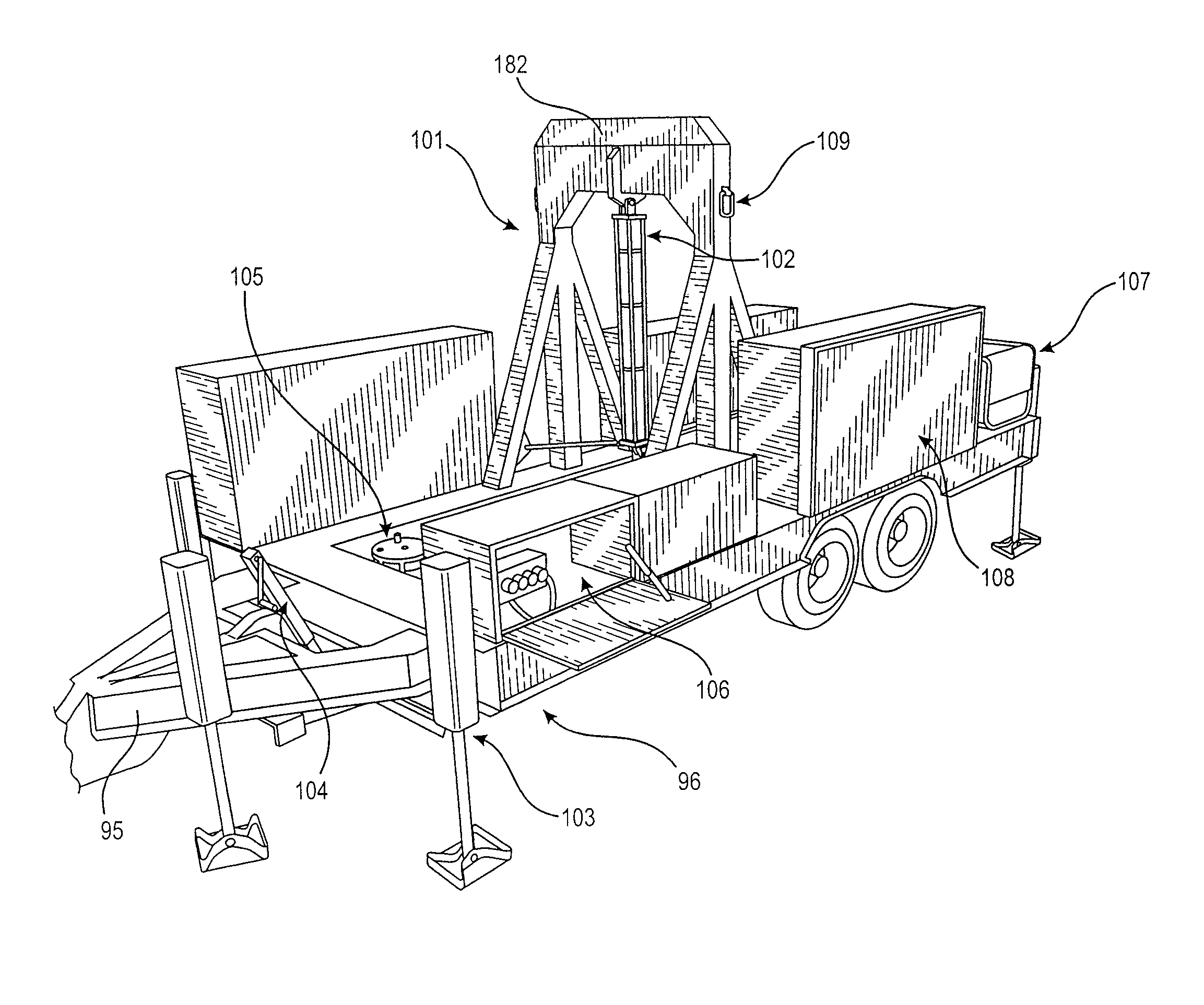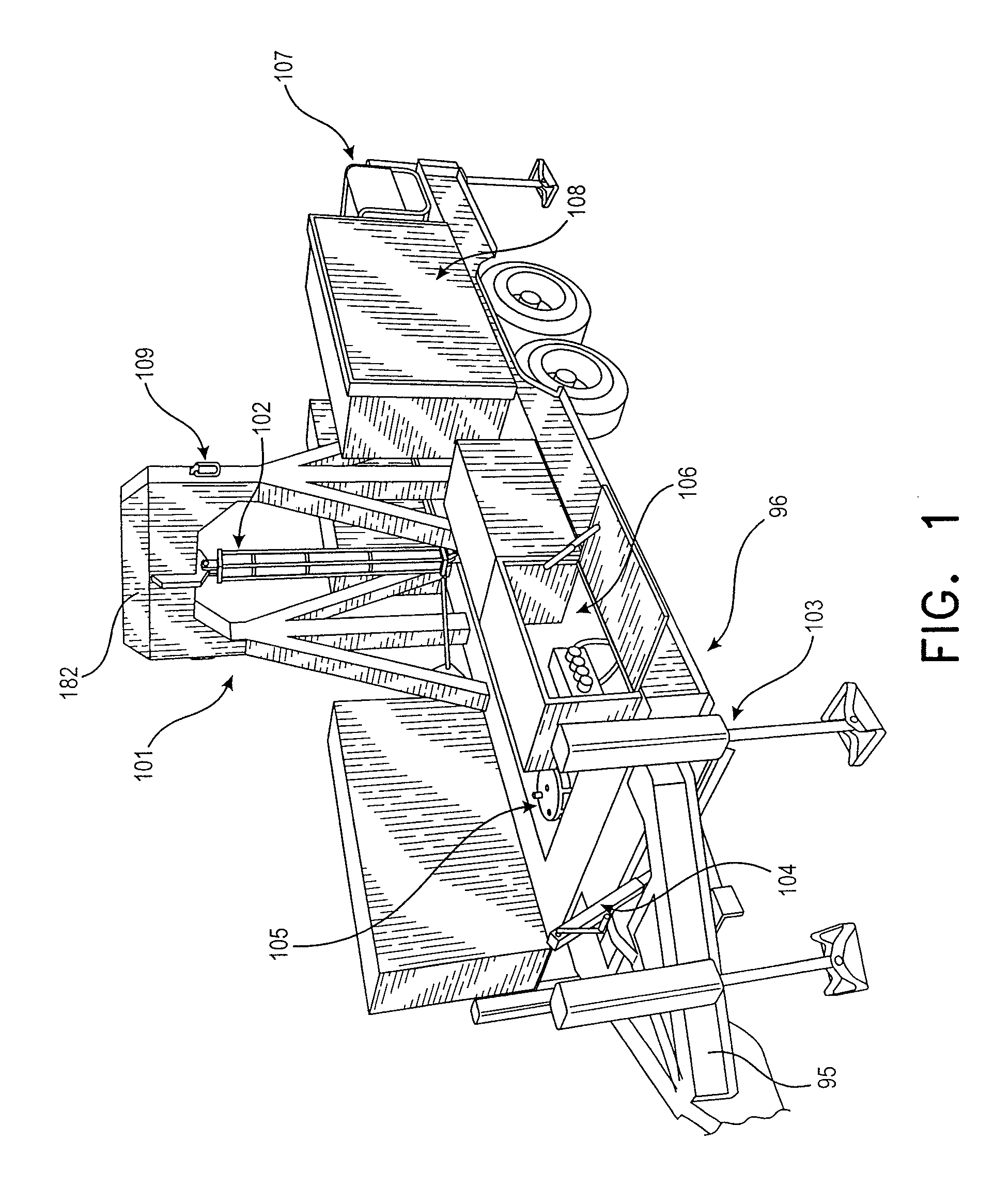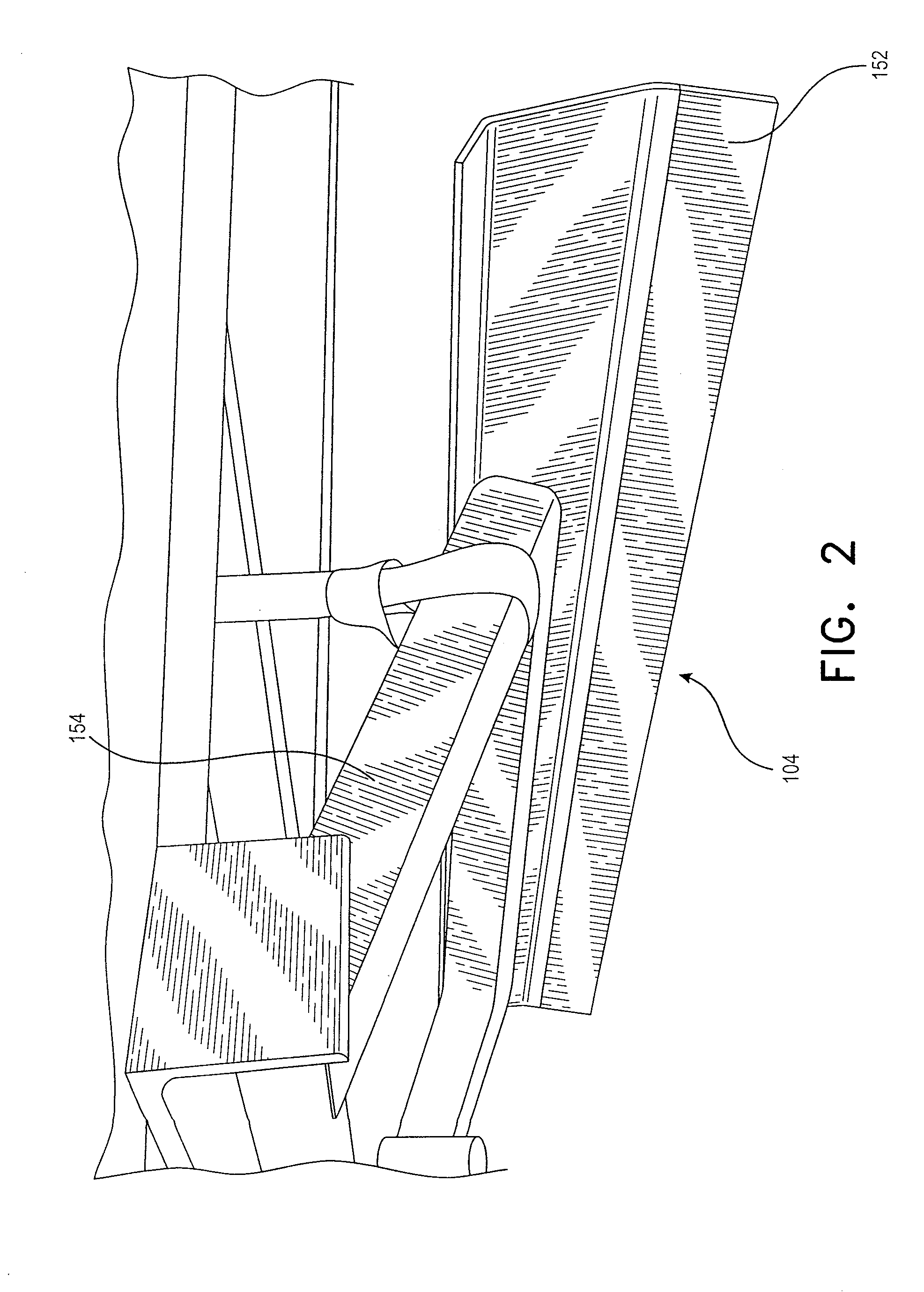Mobile test system and methods for in situ characterization of stress and deflection dependent stiffness and bearing capacity of soils and geo-materials
a mobile test system and in situ characterization technology, applied in the direction of material strength using tensile/compressive forces, instruments, foundation engineering, etc., can solve the problems of inability to characterize static or cyclic stress and deflection dependent stiffness and bearing capacity, inability to provide measurements, and inability to control the construction process to achieve directly measured values
- Summary
- Abstract
- Description
- Claims
- Application Information
AI Technical Summary
Benefits of technology
Problems solved by technology
Method used
Image
Examples
example i
[0091]Bearing plate tests were performed using the mobile test system 101 in accordance with the present invention at a test site in Iowa on a control test section of a nominal six inches of a crushed limestone aggregate base overlying a lean clay subgrade. The tests were conducted using a 300 mm diameter flat bearing plate without a confinement plate. The bearing plate tests were conducted both on the control section, and on a similar section of ground reinforced with a Tensar® TX160 geogrid. The geogrid reinforcement is commercially available from Tensar International Corporation of Alpharetta, Ga. The test methods used and the methods of their use were consistent with the disclosure provided herein. The testing was designed to compare the load versus deflection characteristics of the control section with that of the geogrid section in accordance with the present invention to determine the ground stiffness and bearing capacity thereof.
[0092]The results presented in FIG. 12 demonst...
example ii
[0094]In this test, bearing plate tests were performed using a 300 mm diameter curved plate (75 mm versine) as shown in FIGS. 4A and 6. The tests were performed using the mobile test system 101 in accordance with the present invention at a test site in Iowa on a control test section of a nominal six inches of a crushed limestone aggregate base overlying a lean clay subgrade. Bearing plate tests were conducted on the control section and on a similar section having the Tensar® TX160 geogrid reinforcement.
[0095]Results from the test are presented in FIGS. 13 (a) and (b). For each of the tests, the curved bearing plate was seated into the ground to generate a vertical indention equal to about 20 mm. The load versus deflection results (FIG. 13(a)) demonstrate a near linear response during the initial load cycle for the control section up to about 17 kN, whereas for the geogrid reinforced section a near linear response is observed up to about 29 kN. The stiffer response of the geogrid rei...
example iii
[0097]In this example, two bearing plate tests were performed using the 300 mm diameter curved bearing plate (38 mm versine). Using the mobile test system 101 in accordance with the present invention, the tests were performed both with and without the confining plate, which provides controlled and uniform contact with the ground around the bearing plate. In this example, the internal diameter of the confining plate was 13 inches (330 mm) and the external diameter was 36 inches (915 mm). A 0.5 inch thick low durometer rubber pad was used to provide uniform stress transfer from the bottom of the confining plate to the ground.
[0098]FIG. 14 shows the deflection versus plate contact stress results for tests performed on a controlled test section with a nominal 12 inches of crushed limestone over a soft lean clay subgrade. As shown in FIG. 14, the test compared the effect on deflection of applying a confining stress of a nominal 5.7 pounds per square inch (as designated by the legend “—●—...
PUM
| Property | Measurement | Unit |
|---|---|---|
| width | aaaaa | aaaaa |
| weight | aaaaa | aaaaa |
| diameter | aaaaa | aaaaa |
Abstract
Description
Claims
Application Information
 Login to View More
Login to View More - R&D
- Intellectual Property
- Life Sciences
- Materials
- Tech Scout
- Unparalleled Data Quality
- Higher Quality Content
- 60% Fewer Hallucinations
Browse by: Latest US Patents, China's latest patents, Technical Efficacy Thesaurus, Application Domain, Technology Topic, Popular Technical Reports.
© 2025 PatSnap. All rights reserved.Legal|Privacy policy|Modern Slavery Act Transparency Statement|Sitemap|About US| Contact US: help@patsnap.com



